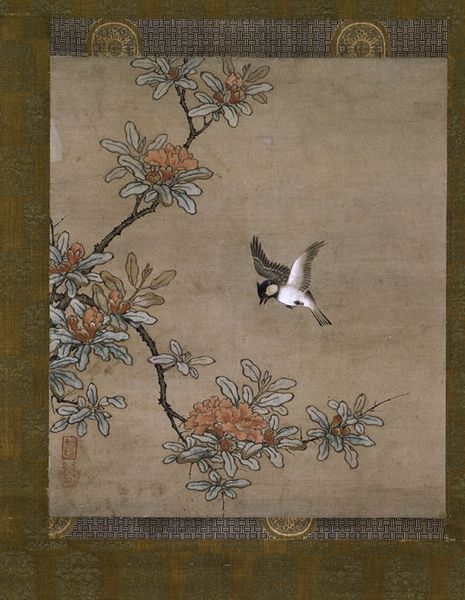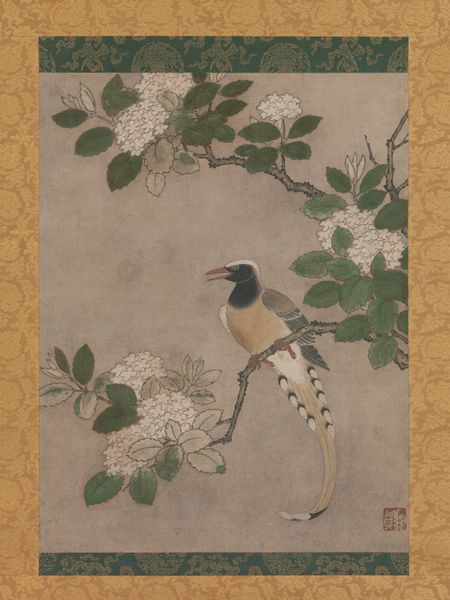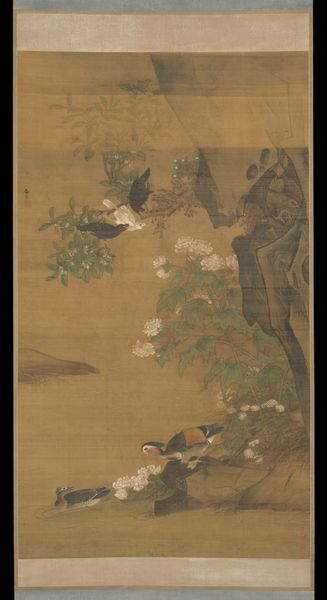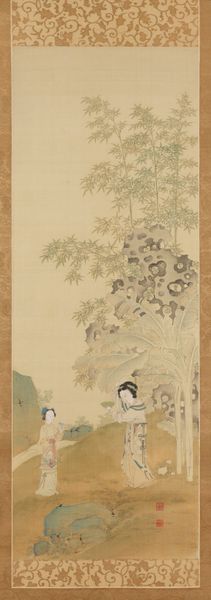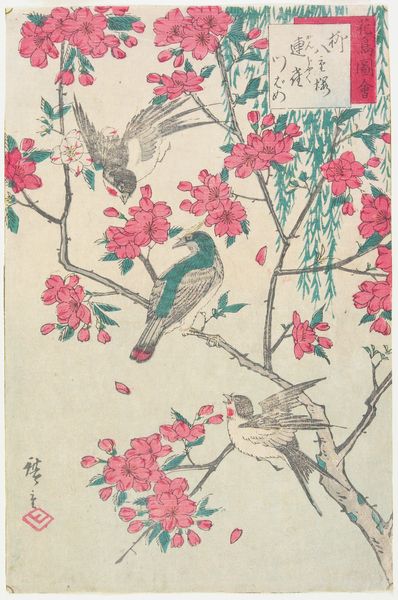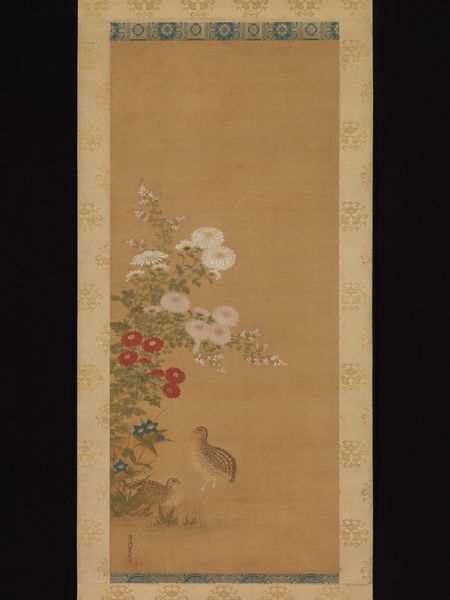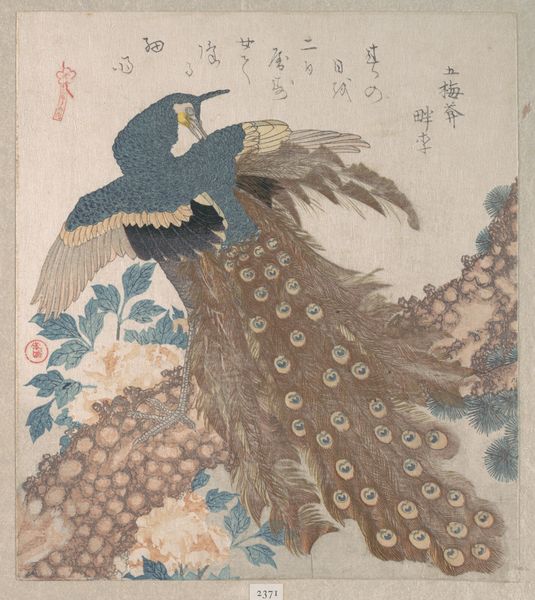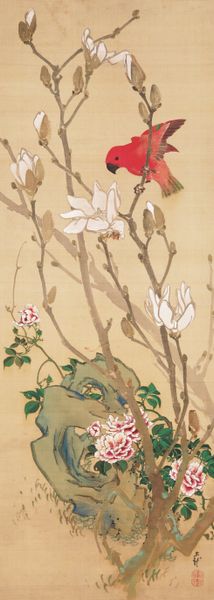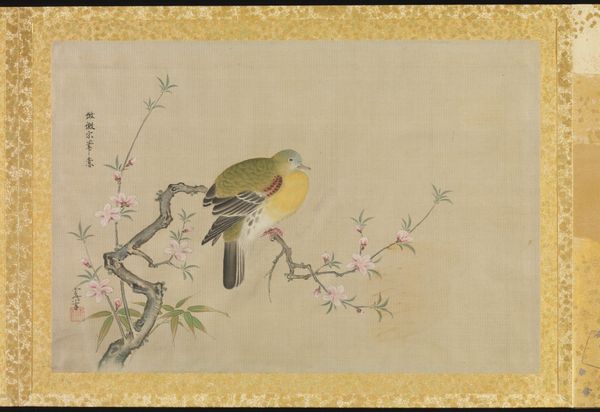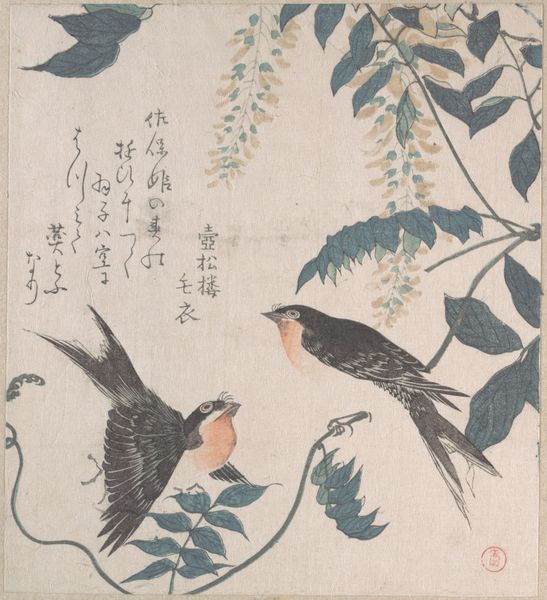
painting, watercolor
#
painting
#
asian-art
#
landscape
#
figuration
#
watercolor
#
orientalism
Dimensions: Image: 60 1/4 × 34 3/4 in. (153 × 88.2 cm) Overall with mounting: 79 15/16 × 41 3/4 in. (203 × 106 cm) Overall with knobs: 79 15/16 × 46 3/4 in. (203 × 118.8 cm)
Copyright: Public Domain
Editor: Here we have "Peacocks and Peonies," a watercolor painting by Tani Buncho, dating from between 1810 and 1830. The colors are surprisingly muted, almost like a faded tapestry. How would you interpret the composition of this piece? Curator: Let us observe the composition closely. Notice the carefully arranged clusters of peonies. The artist employs a vertical format, segmenting the space into distinct yet harmonious zones, where botanical forms intertwine with avian figures. Consider the artist's intent behind the strategic distribution of light and shadow; observe the tension it creates within the pictorial field, thereby modulating the viewer's gaze. Editor: I see how the distribution of elements creates that visual pathway you mention. Does the somewhat restrained palette inform our understanding of its structure? Curator: Indeed. The restricted color palette serves to further emphasize formal structure and underlying compositional strategies. Each shade works in conversation, if not confrontation, with the others to create areas of focus. Notice, also, how the artist directs the beholder's eye not by bold gesture, but subtle modulation in values to further isolate and elevate the subject matter. Editor: This close visual examination really shifts how I perceived the work initially. Curator: Precision in pictorial vocabulary offers more than aesthetic experience. It furnishes deeper insight into the essence of pictorial rhetoric. By appreciating nuance and structural elements, we not only comprehend the art; we engage in dialogue.
Comments
No comments
Be the first to comment and join the conversation on the ultimate creative platform.
